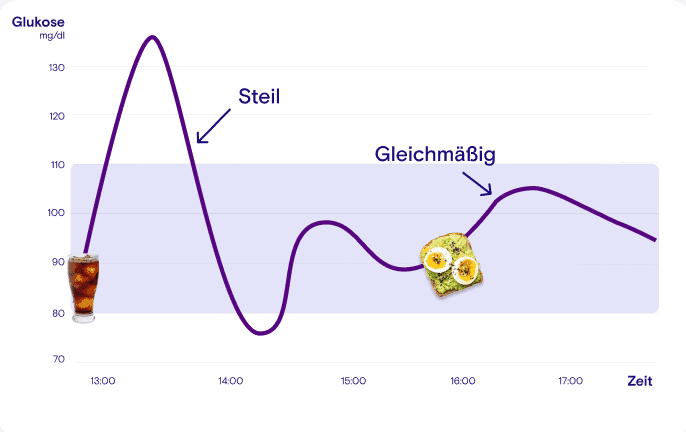You may have noticed that your blood sugar levels never rise at the same rate. What's the reason for this?
In general, you should avoid steep climbs . Unless you have to run away from a tiger or catch a train because there won't be another one until tomorrow morning. In that case, it would be best to get your energy quickly. In these cases, steep climbs are a good thing.
At all other times, when you're not running away from a tiger, your blood sugar should stay as low as possible and have a smooth, even curve with no sharp edges or climbs.
It depends on your diet
Depending on what you eat, your blood sugar will rise faster and more sharply. For example, sugary drinks will cause your blood sugar to spike sharply, while foods containing fiber, fat, and protein (like avocado toast) tend to lead to a more stable blood sugar curve.

For your understanding:
At Hello Inside, we consider a spike to be when your blood sugar rises above 140 mg/dl AND 60 mg/dl within 60 minutes.
So if you eat something and your blood sugar starts at 95 mg/dL and reaches a peak of 127 mg/dL after 60 minutes, there's no need to worry. It's a spike, but not a sharp one. (Spike)
Ideally, your blood sugar shouldn't rise above 30 mg/dl after a perfectly healthy meal. But we know that's life, and some meals can cause blood sugar levels to rise above 30 mg/dl.
Learn more
You're here to learn more about your body and improve your mealtimes. A look at your data can help you get closer to ideal scenarios. With continuous glucose monitoring (CGM) and the Hello Inside app, you can see in real time how foods affect your blood sugar and metabolism.
Over time, you can identify trends and use them to effectively change your diet and lifestyle. We'll help you figure out what healthy eating means to you, so you can eat mindfully and avoid following a one-size-fits-all diet.




